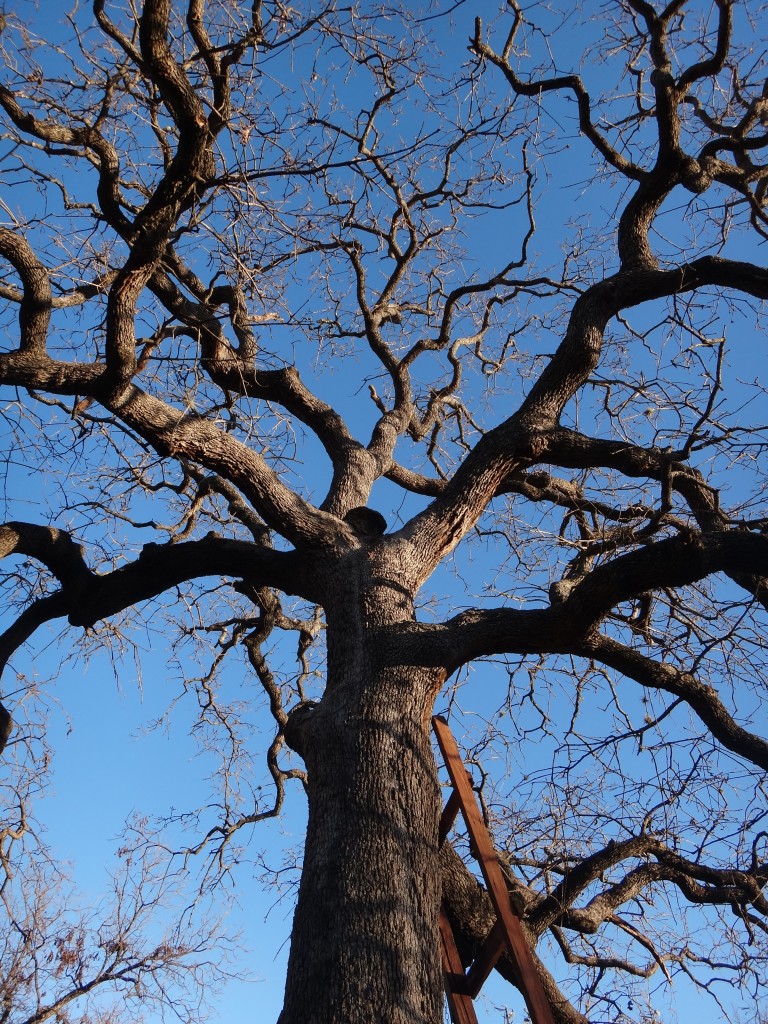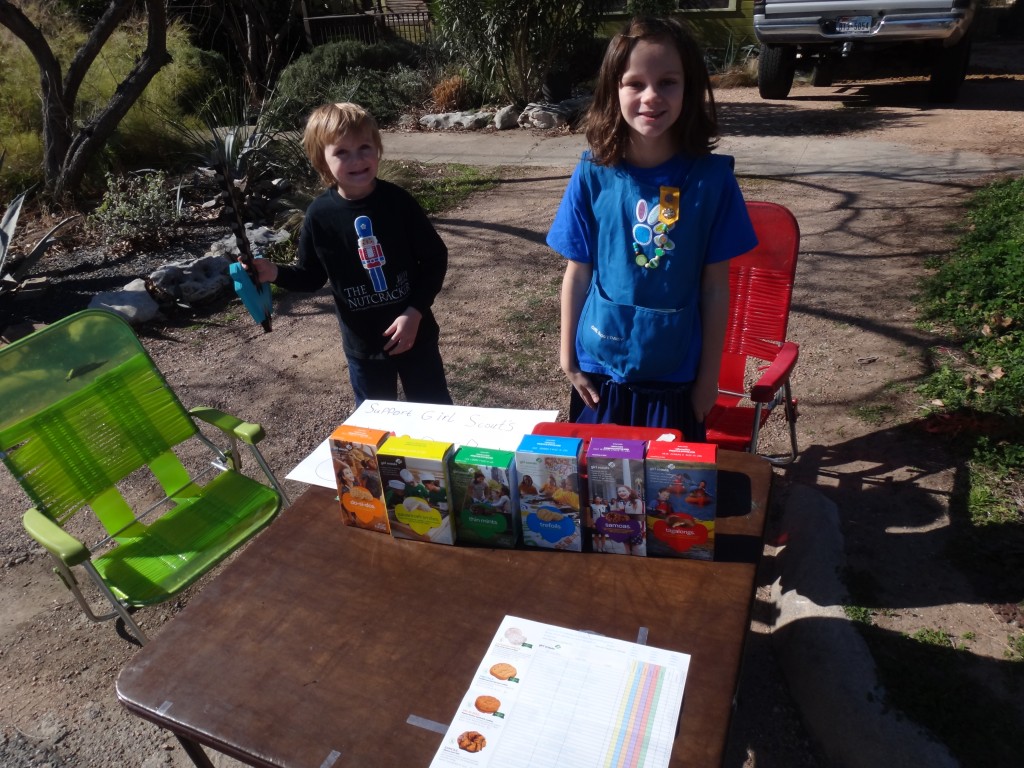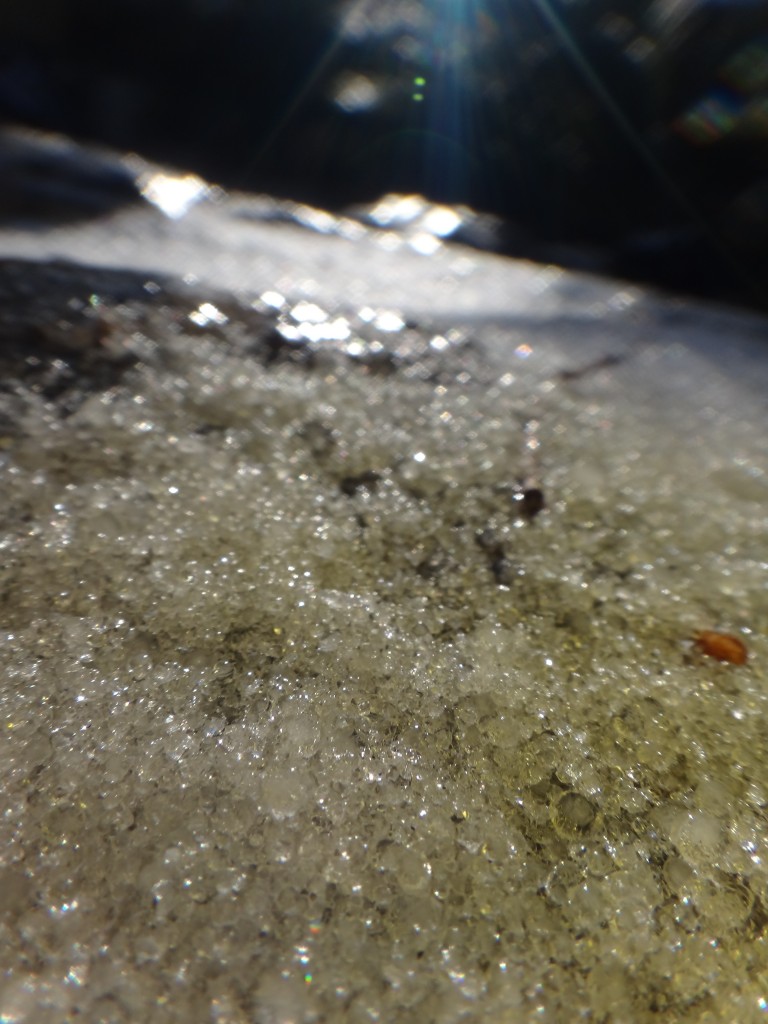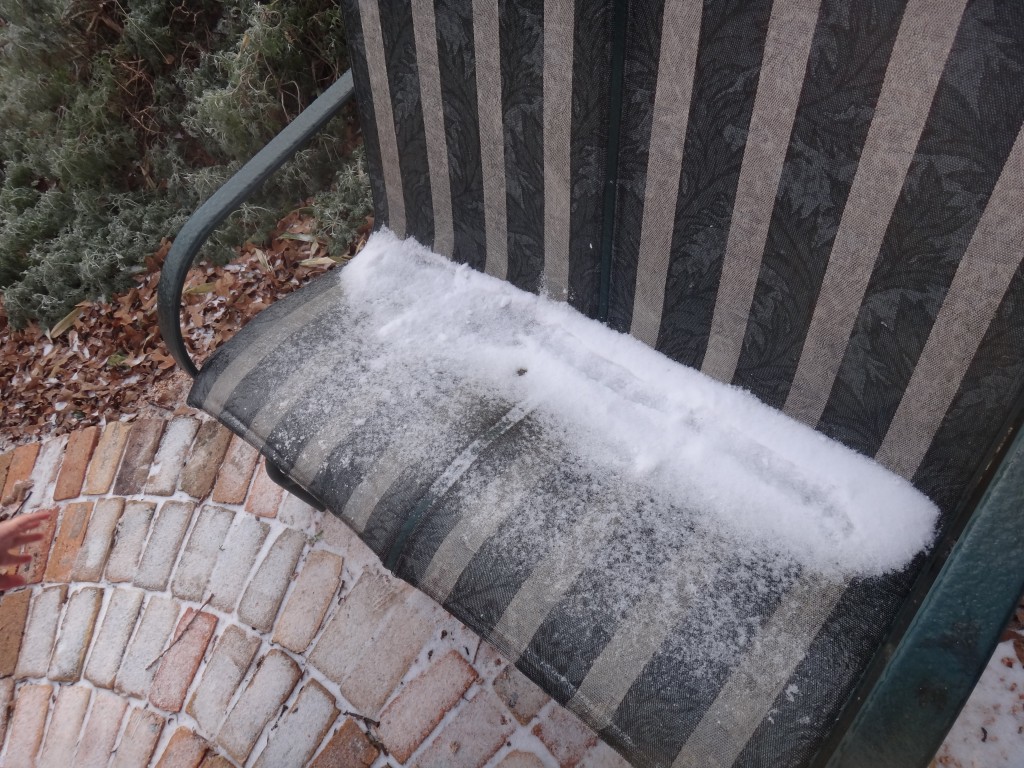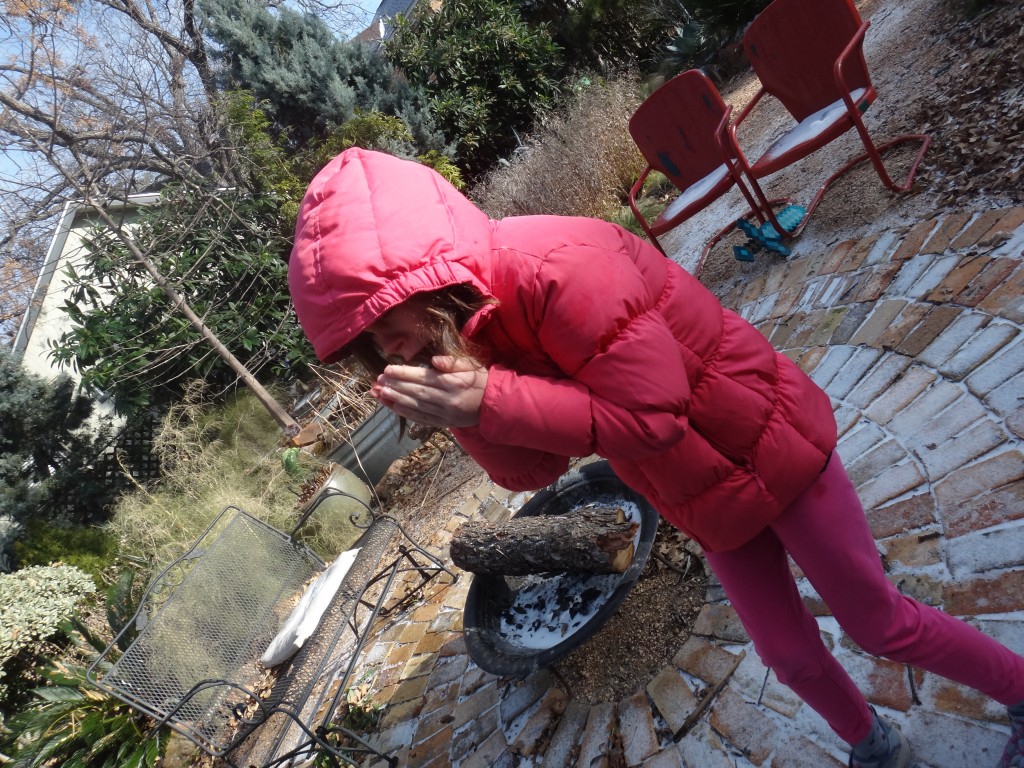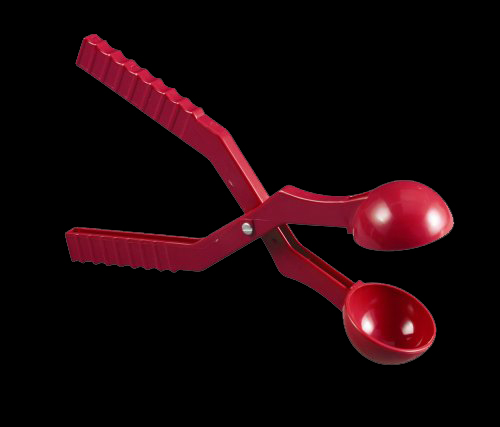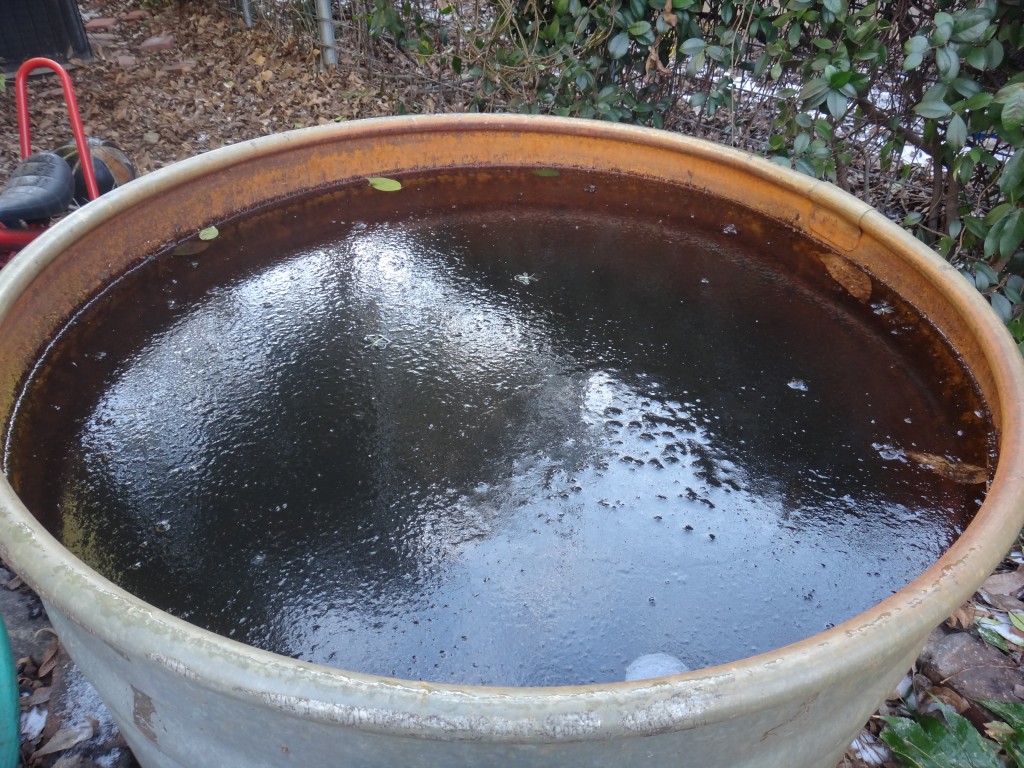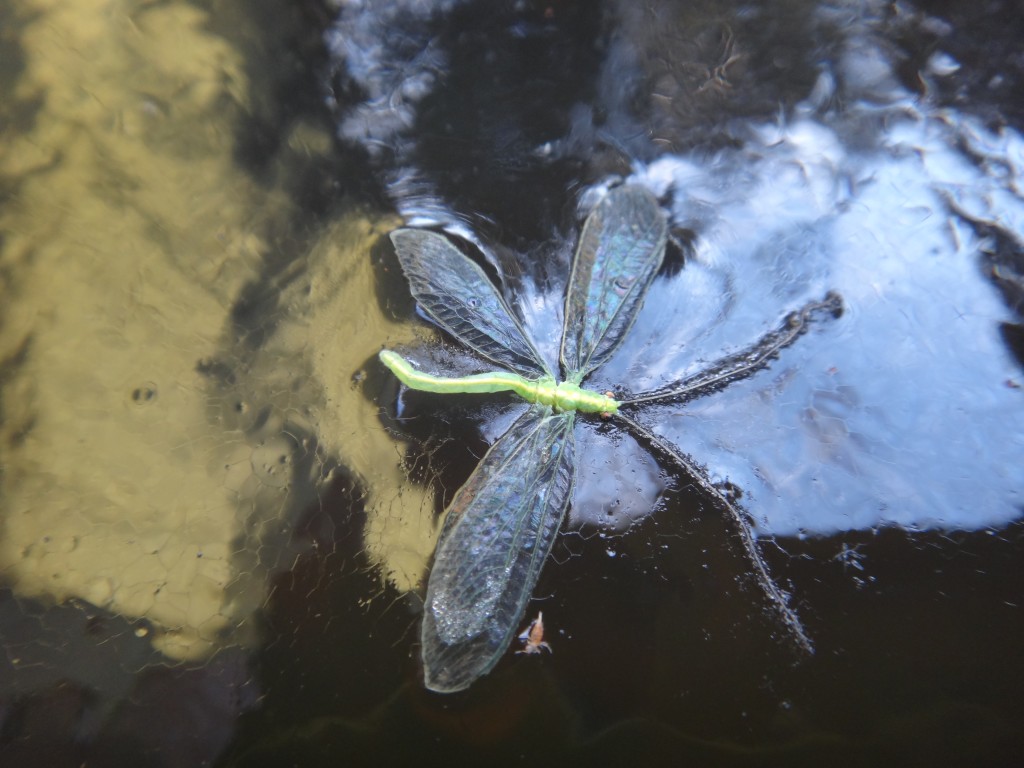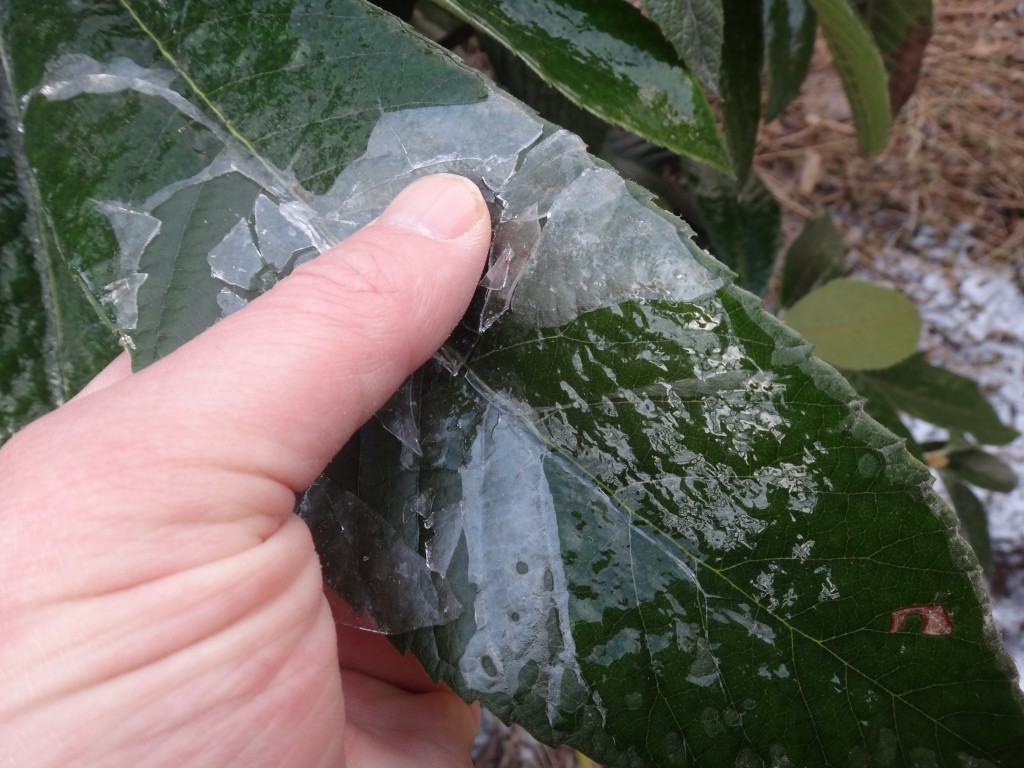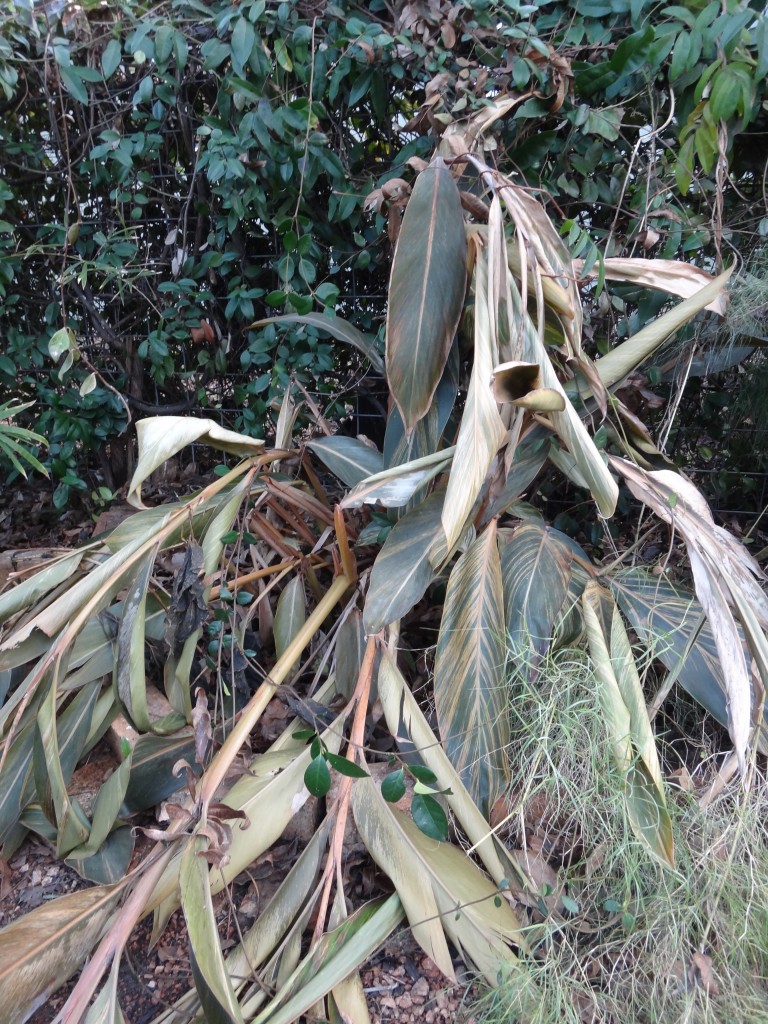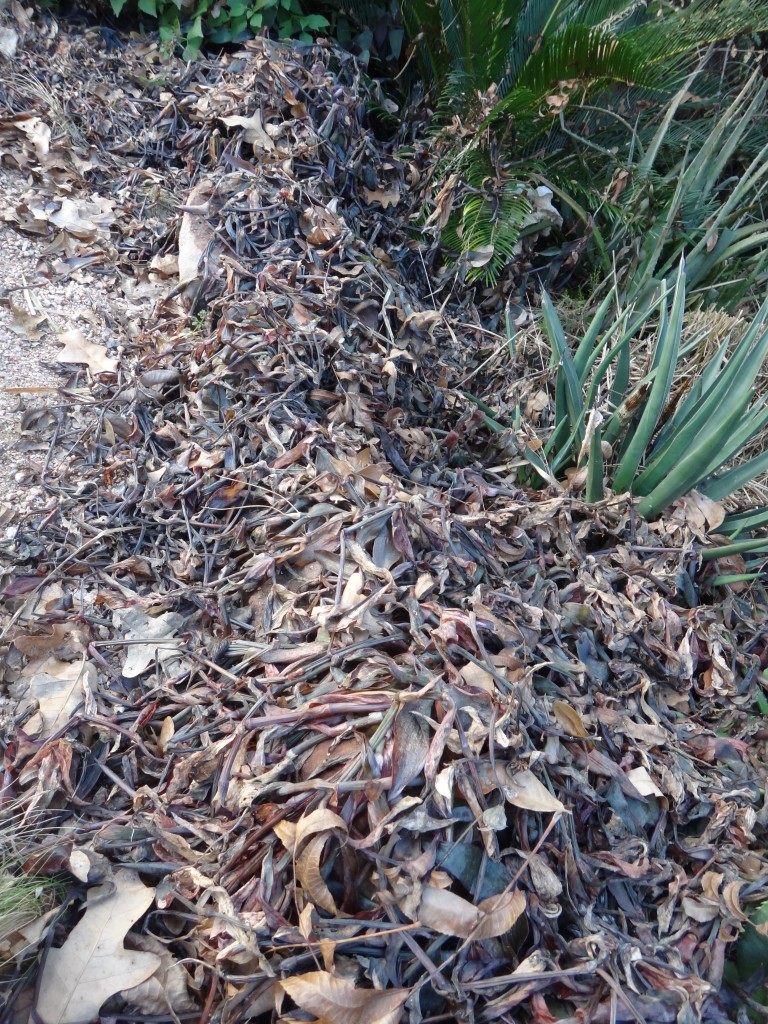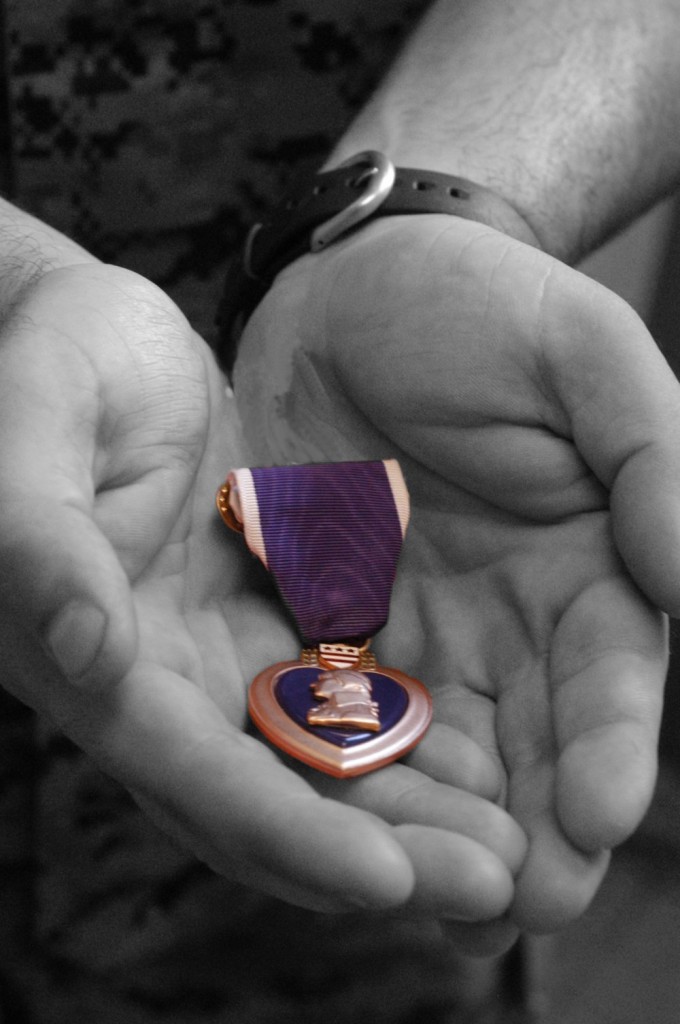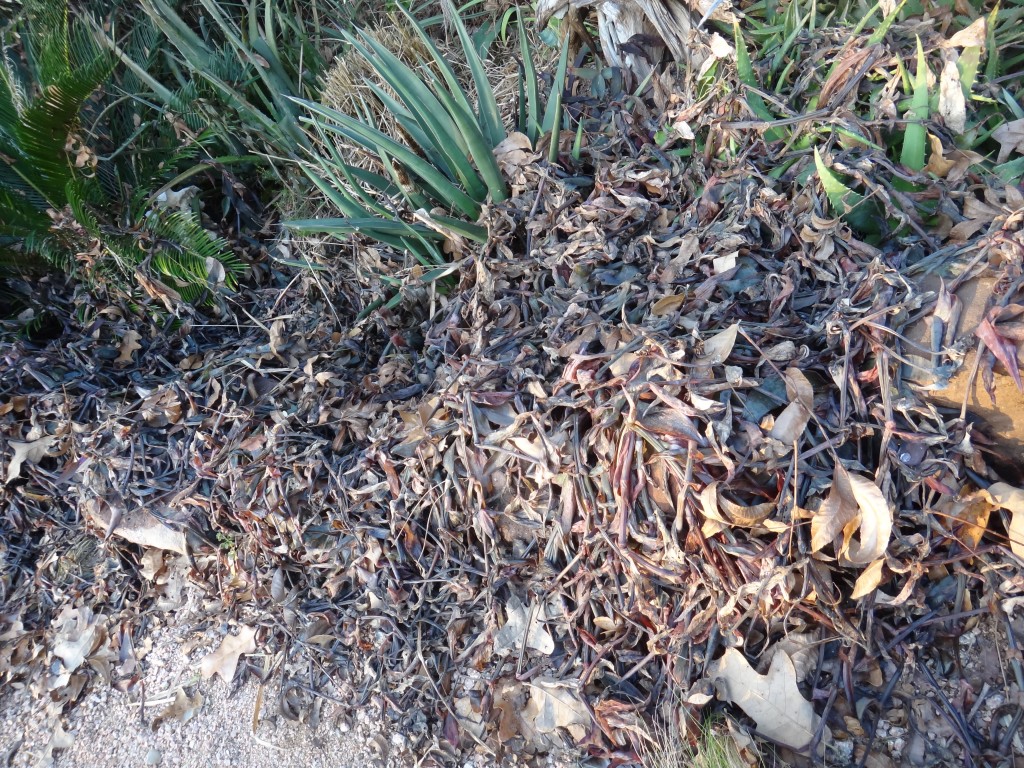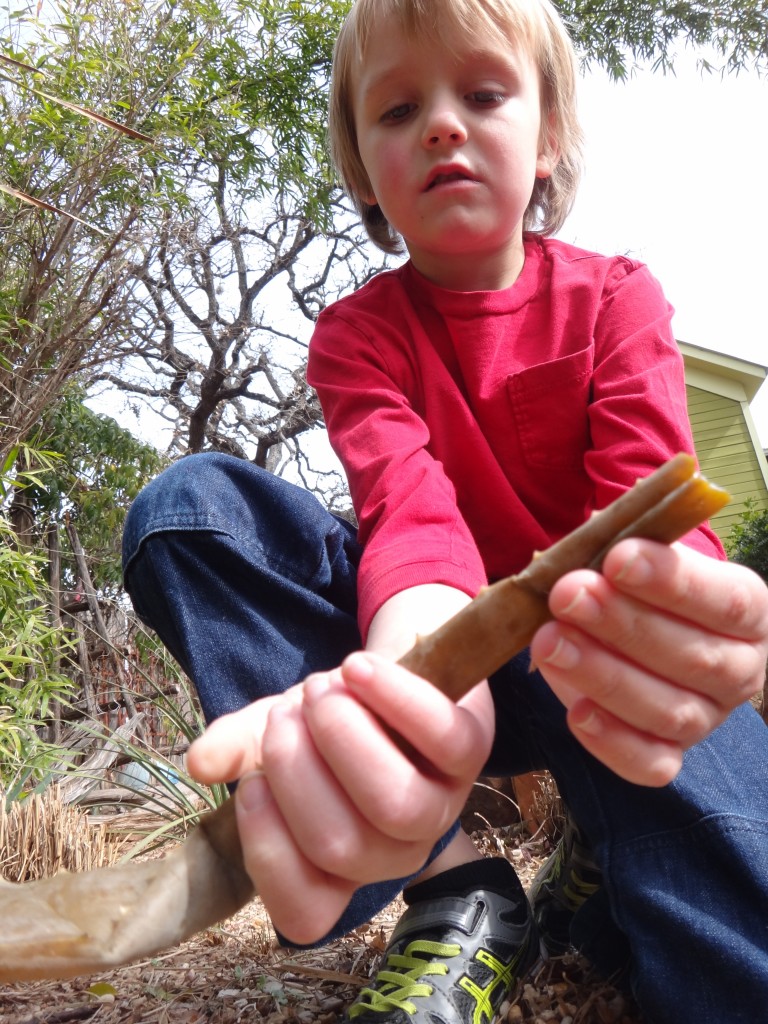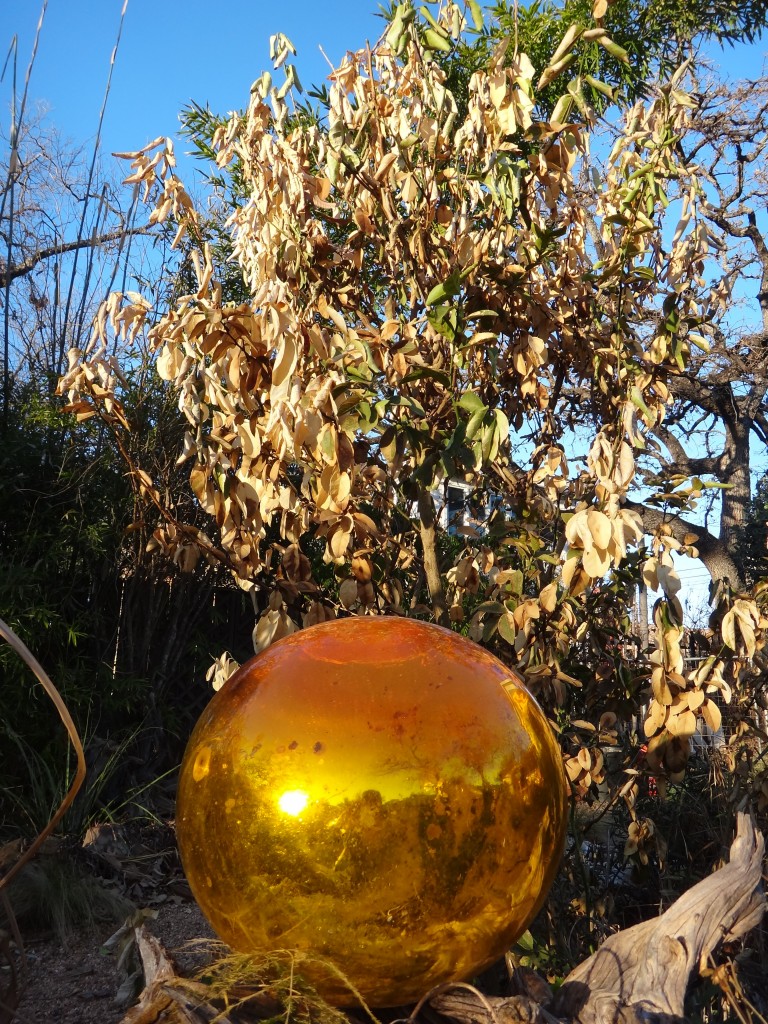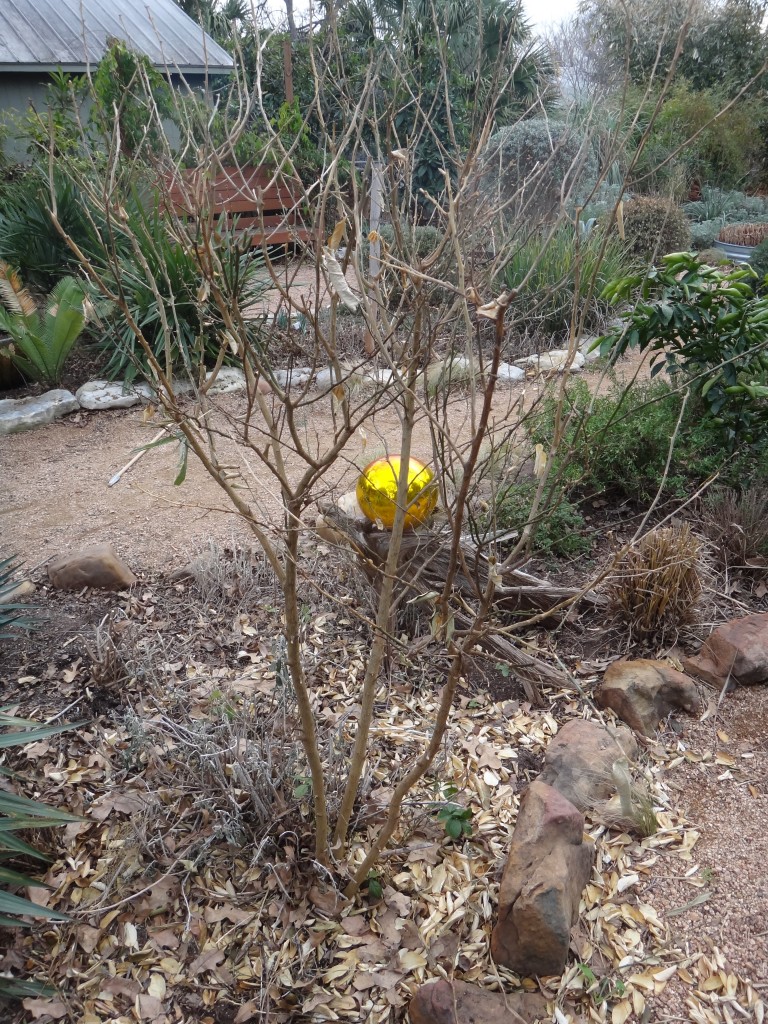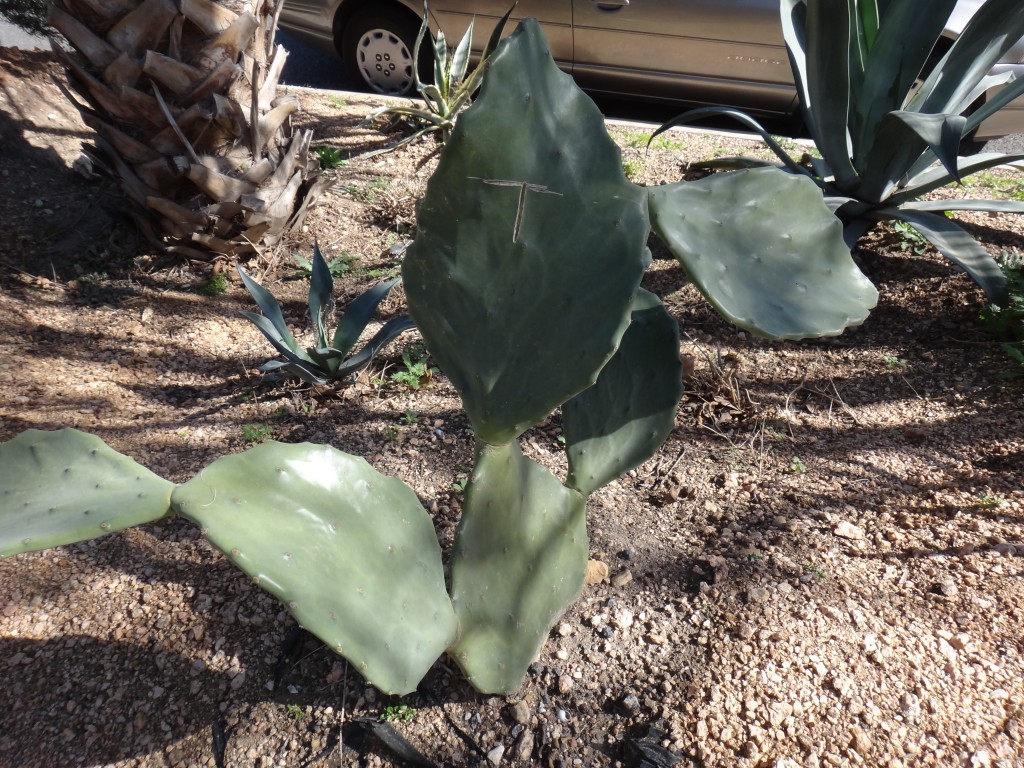Oh Yes,
another

…second place for the ‘most aesthetically unpleasing plant after a freeze award’
has just been awarded to this…

…Agave americana.

It was once a mythical creature that enveloped and sank many a boat crossing my stock tank with sharp writhing arms,

and now it has been reduced to beef jerky. Oh, how the mighty fall.
One plant that turns color and strangely lives up to its name after a few hard freezes is the cardboard palm (it is actually a cycad).
Zamia furfuracea

What were once olive green leaves that feel like cardboard to the touch, (hence the name Cardboard Palm),

turn to a rusty orange-brown aged-mahogany after a freeze. I have had these two cycads for many years now, both usually return from the ground with fresh green growth in the spring. Considering this is a native to the southeastern Veracruz state in eastern Mexico this plant has done quite well for me under the canopy of my post oak.
Note: This plant is poisonous to animals and humans – no treatment for the poisoning is currently known.

Got that?

Enough of the brown and wizened – we have cone flowers on the rise, not to mention larkspur and bluebonnets, and then there is the early blooming
Texas scarlet flowering quince:

Chaenomeles speciosa

The flowers of this small shrub emerge before the foliage develops, a very early and prolific bloomer.
Moving Along:
This is what happens to an iPhone when it gracefully pirouettes through the air and performs a spectacular landing on top of a pointed piece of decomposed granite.

It didn’t stand a chance.
I decided to channel my annoyance on my one remaining pampas grass. It has been long in the tooth for a few years now after all.

I went into the house, put on my dedicated pampas removal outfit (complete with my new magazine and duct tape forearm protectors, an idea I adapted from):

The thinking here being, if these could stop the gnashing teeth of

it should provide adequate protection from a pampas.

The passage of time has been long enough for me to forget just how stubborn these large grasses are to get out of the ground (I started with three) and this one was a monster. I believe it had rooted in two additional areas from the main grass. It was a tri-pampas and it took me all of 30 minutes hacking at it to get it to topple.
It would have been less but every couple of minutes I had to perform my customary

to escape the scurrying unmentionables that boiled out of its rotten interior.


Yes…in there.
At least there wasn’t a snake.
I do like pampas, especially the pink variety and they look great for a number of years, but they do have a garden shelf-life unless work is put into pruning them back every year when they mature. I have heard of people burning them back to the ground in the winter months – I would imagine this helps maintain the original form of the plant, but for fear of igniting my neighborhood and obtaining a Darwin award this is really not practical in the Patch.

Finally:
I recently returned to a landscape I completed.

Here is the water feature that was installed with baby roses as a backdrop:

About a year later,

and the boulder has taken on some great coloration.
And why the post title you may ask?
Nothing more I am afraid.
Stay Tuned for:
“”

All material © 2014 for eastsidepatch. Unauthorized
intergalactic reproduction strictly prohibited, and
punishable by late (and extremely unpleasant)
14th century planet Earth techniques.

